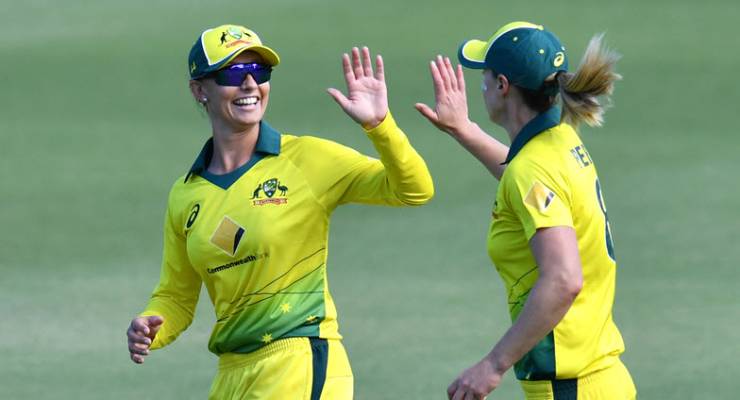
I was presenting my client’s case to a tribunal, addressing the person presiding as “chair”, and wondering as I sometimes do whether I’d like to be referred to as a piece of furniture. Then I remembered that I am and have been the chair of various entities and it hasn’t made me feel any more inanimate than my personality dictates.
The cricket world is still digesting the news that the traditional term for the person who holds a stick and hits the ball, the “batsman”, is being retired in favour of the gender-neutral “batter”. With the wild popularity of women’s cricket, nobody was keen on “batswoman” because it sounds stupid which, if true, means batsman sounds stupid too. “Batsperson” hasn’t been considered by anyone, sadly.
Anyway, any objections from the old school are crippled by the fact that the person chucking the ball has always been called a “bowler”, not a bowlsman. Bowler, batter, fielder, wicketkeeper, umpire; by historical accident, cricket had always been almost perfectly equality-ready. Third man still needs to be dealt with.
In the football codes, the playing positions have never been gendered, but they are about to be drawn into the next phase of the revolution: the W.
The A-League, Australia’s premier football (soccer) competition, has announced it will be the first to drop an anomaly which has been prevalent worldwide: the (traditional) men’s competition carries a gender-neutral name, but the more recent women’s equivalent is distinguished by the addition of a W. Thus the men played in the A-League and the women in the W-League, but now they will be referred to as the A-League Men and A-League Women.
Which does make a lot more semantic sense, since the A stands for Australia and the W did not stand for Womenistan.
In rugby league, it remains NRL for the men, NRLW for the women; in Australian rules, AFL and AFLW. Rugby has the Super Rugby and Super W Rugby.
It’s been the same, largely, overseas: the NBL and WNBL in American basketball, and the Premier League for men, FA Women’s National League for women in English football.
A push for the AFL to add an M to its men’s competition title and thereby equalise AFLM with AFLW has begun. It has the merit of logic.
Do these semantic battles matter? You bet they do. It’s important that we address them with an open and rational mind, not reflexively either for or against. The argument for neutral terminology, for all designations of title or role to be occupied by a person, has universal force as a necessary weapon in combating gender-typing.
The case for neutrality in the naming of cohorts has a different basis: it is simply a statement that neither gender’s engagement in a particular pursuit is the norm, and the other an exception. Netball played by men should not, likewise, be called men’s netball.
There is a separate, and more difficult, debate — mostly not had at all — about the binary distinctions in sports and elsewhere in which we persist and which exclude non-binary people or force them into difficult and sometimes controversial choices.
It’s lovely to see these days what wasn’t possible when I was in under-sixes soccer: children of whatever gender running around and failing to kick the ball together.
Bigger questions remain, but we can keep working in the meantime on rooting out the anachronistic residue of our sexist past. Levelling a playing field is always worthwhile. And I’m at peace with being, or talking to, a chair.
Is the change cosmetic or, as Bradley says, an important move? Let us know your thoughts by writing to letters@crikey.com.au. Please include your full name if you would like to be considered for publication in Crikey’s Your Say column. We reserve the right to edit for length and clarity.








This is an excellent argument in favour of creativity, intelligence and proportionality in language evolution. The casual assumptions deeply embedded in our language usage are more behaviourally powerful than we recognise. It’s intellectually undeniable that a term like ‘chair’ rather than ‘chairman’ will grate on ears like mine at least as much for its deeper accusatory proddings about the insidious power of inherited privileged as for its tonal and descriptive truncation. But it grows on you, and in truth its normalisation has actually unlocked greater descriptive and functional power.
I do make a modest plea in defence of eloquence, wit, accuracy and especially music. The shift away from linguistic gender stereotyping does have a habit of throwing up untenable howlers and clunks. The non-binary evolution in particular is thus far proving to involve a lot of mock-worthy dead ends and counter-productive, even deeply damaging, wrong turns. The most glaring tend to be every bit as excluding as their antecedents, with the added hurts of arrant absurdity and Escher-esque redundancy. Let’s not slouch beastfully too far down such dead ends as ‘People who menstruate’, retrospective bowdlerising of the likes of RBG and Shakespeare, or trying to shoehorn jagged neutral pronouns into those harmless syntactical zones where, as with loos, a little nod to decorum and common practical decency really ought not be artificially allowed to outrage us.
We are a smart, literate species and we are eminently capable of walking and chewing gum at the same time. I can live with ‘batter’, but I really love alfalfa male’s ‘slugger’. Let’s seize the disruptive moment to get super-sexy, sustainable and smart with our neologisms! Language grows, we follow. Let’s make it a truly poetic ride, for all.
Lovely read, MB.
I cannot fathom how anyone with even a passing familiarity with another language can take this disgenderingization seriously.
When language is debased, complex thought suffers.
BTW, “I do make a modest plea in defence of eloquence, wit, accuracy and especially music.” – does brevity rate a guernsey?
They should call them “sluggers”
I like Chair, and Batter, but remained vexed by Waitperson replacing Waiter.
What’s wrong with ‘waiter’?
I agree.
Madam Chairman, I put it to you that English always has had a neutral gender. It occurs whenever the sex of a person is irrelevant to the meaning of a sentence. The suffix,-man has always served primarily as neutral, with the context deciding the sex of the person or persons concerned. Over the last few decades, we could have focused more on the too-frequent assumption that a something-man was male and less on the choice of words themselves. We have no confusion about whether “a German” is man, woman or child. “Fifty million Frenchmen can’t be wrong” has made sense across the last hundred years and will continue to make sense into the future.
Nope.
If the plain meaning of language does not matter, it has no nuanced meaning.
A Frenchman, an Englishman and a pedant walk into a bar…